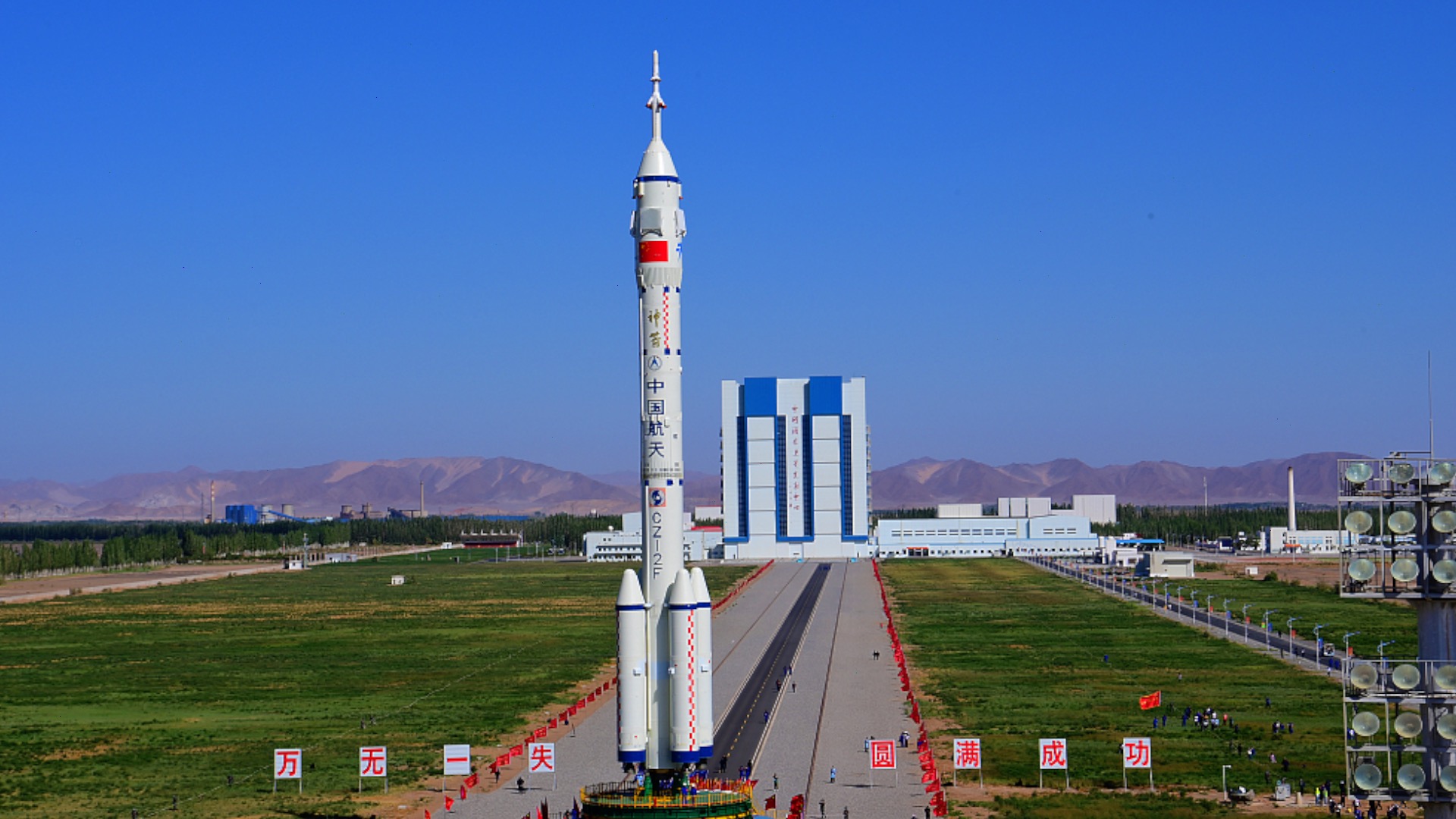03:34

China will launch its Shenzhou-14 crewed spaceship on Sunday, the China Manned Space Engineering Office (CMSEO) said at a press conference on Saturday.
The spaceship is scheduled to blast off at 10:44 a.m. Beijing Time from Jiuquan Satellite Launch Center in northwestern China in a Long March-2F Y14 rocket which is about to start propellant filling.
Chinese astronauts Chen Dong, Liu Yang and Cai Xuzhe have been selected to carry out the Shenzhou-14 space mission, said the CMSEO.

L-R: Cai Xuzhe, Chen Dong and Liu Yang, the crew members of China's Shenzhou-14 mission. /CMSEO
L-R: Cai Xuzhe, Chen Dong and Liu Yang, the crew members of China's Shenzhou-14 mission. /CMSEO
The launch of the Shenzhou-14 spaceship is the first manned space mission in the construction phase of China's space station.
The CMSEO said the Tianzhou-3, Tianzhou-4 and core modules are in normal condition with all equipment working properly, ready for rendezvous and docking, and the entry of astronauts. Preparations for launching have basically been completed with the product quality of the Shenzhou-14 spaceship and the rocket under control. The crew is in good condition, and ground system facilities and equipment run stably.
Following the launch of Shenzhou-14, the lab module Wentian is scheduled to arrive in July, the lab module Mengtian in October, and then the Tianzhou-5 cargo craft and the Shenzhou-15 crewed spaceship later this year.
Read more: What to expect from China's space station in 2022
Tasks of the Shenzhou-14 crew
The three-member crew will live and work in orbit for six months, and welcome two lab modules – Wentian and Mengtian, the Tianzhou-5 cargo spacecraft and the Shenzhou-15 manned spaceship to dock – and rotate with the Shenzhou-15 crew in orbit before returning to Earth in December.
The Shenzhou-14 crew will complete a series of tasks during their stay in the space station, including overseeing the lab modules' rendezvous, docking and transposition with the core module, completing in-orbit assembly and construction of the space station, completing the installation and commissioning of equipment inside and outside the space station cabin, conducting space science and technology experiments, and carrying out daily maintenance tasks.
As in previous missions, the taikonauts will give Tiangong classes to youngsters on Earth, and will for the first time use the airlock cabin in the Wentian module to exit the station for extravehicular activities. These activities will be arranged two to three times over six months.
As the Shenzhou-14 spaceship enters orbit, it will adopt an autonomous fast rendezvous and docking mode and dock with the radial port of the core module.
Lab modules provide bigger platform for scientific experiments
The Wentian and Mengtian lab modules will provide a bigger platform for scientific experiments in space.
Lin Xiqiang, deputy director of China Manned Space Agency, said during the press conference that the space station can fit 25 laboratory cabinets, each can be seen as a small space lab, to support the development of single or multi-disciplinary space science experiments.
The Wentian lab module is mainly for space life science research. It's equipped with laboratory cabinets for life ecology, biotechnology and variable gravity science. The Mengtian lab module is for microgravity science research, it's equipped with multi-disciplinary laboratory cabinets for fluid physics, materials science, combustion science, basic physics and aerospace technology experiments.
There will also be equipment deployed outside the cabin for extravehicular experiments.
Lin said nearly 100 experiments are planned during the construction phase of the space station. After the operation is normalized, large-scale scientific research will also be carried out, which is expected to effectively promote breakthroughs in major frontier scientific fields such as dark matter and dark energy, galaxy formation and evolution, laws of the nature of matter, as well as the sustainable development of the Earth.
New robotic arm for elaborate operations
The Wentian lab module is equipped with a small robotic arm, which is half the weight and length of the existing robotic arm on the core module of the space station, and has a load capacity of about one-eighth of its predecessor.
Its end positional accuracy is five times higher than its predecessor, allowing it to conduct more elaborate operations.
The small robotic arm will have similar missions to its predecessor, including assisting astronauts during extravehicular activities and carrying out inspections of extravehicular conditions.
Being able to crawl independently outside the cabin, the small robotic arm can perform operations of installation and maintenance of various loads and equipment that require higher precision. It can also form a group with the existing robotic arm to extend the working range outside the cabin.
In addition, the large and small robotic arms can complete self-maintenance work of mutual search and inspection, effectively improving the reliability of the entire robotic arm system.
(CGTN's Zhao Yuxia also contributed to the story.)

